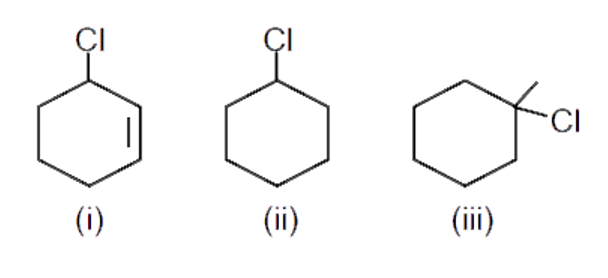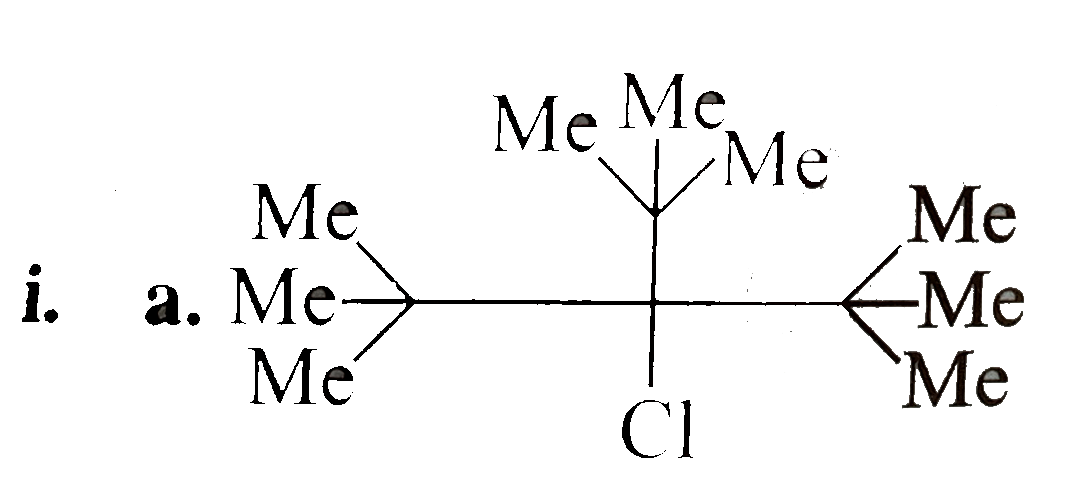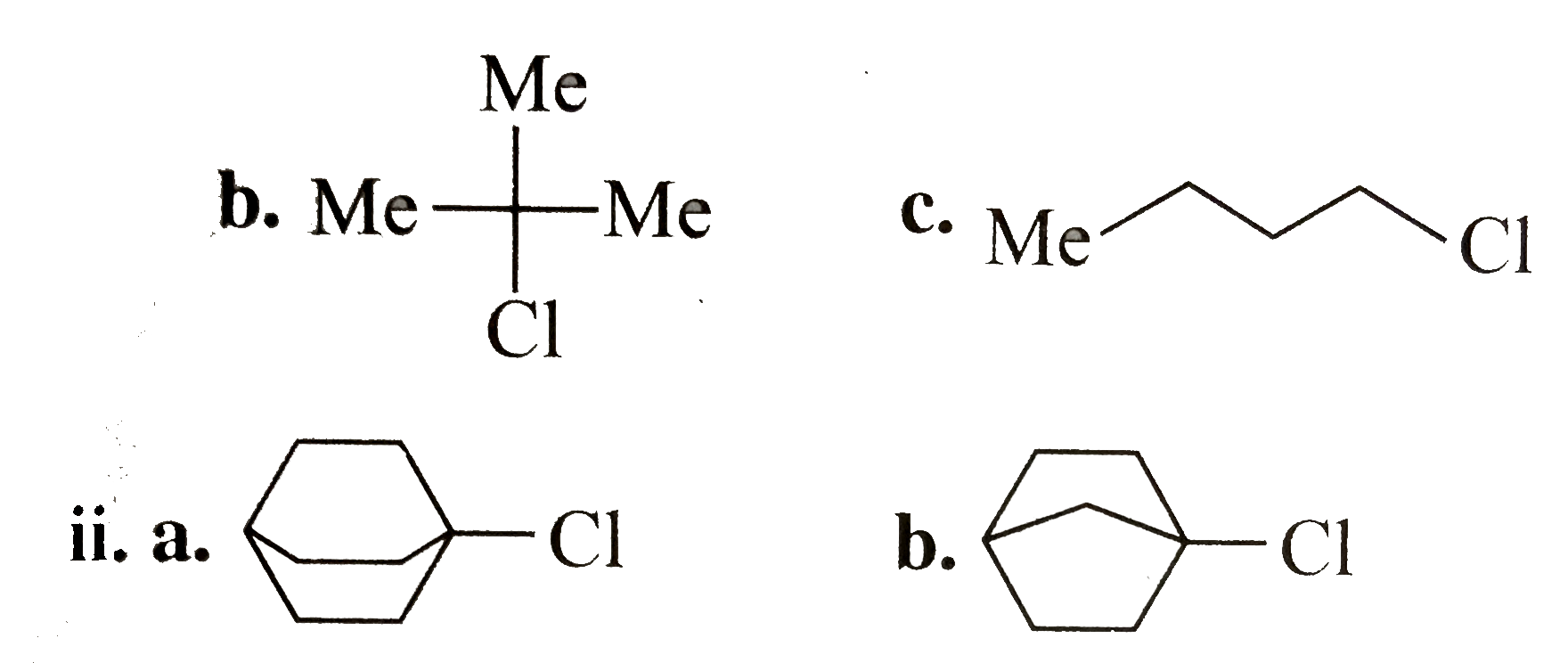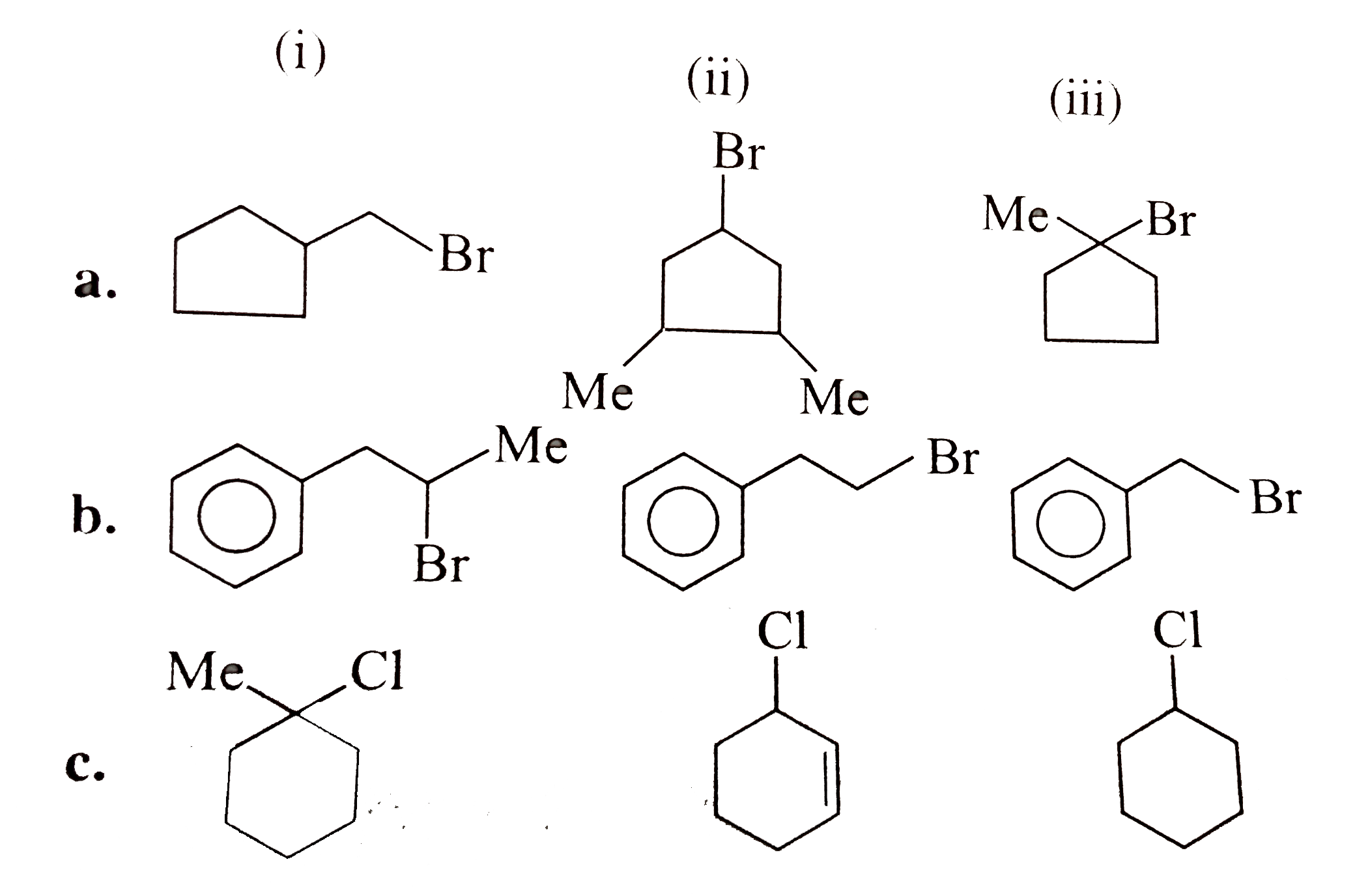Give the order of SN−1 of SN−1 and SN2 displacement of halogen CH3X,1∘X,2∘X,3∘X.
To determine the order of SN1 and SN2 reactions for the displacement of halogen from different types of alkyl halides (methyl halides, 1° halides, 2° halides, and 3° halides), we can analyze the mechanisms of both reactions.
1. Understanding SN1 Mechanism:
- The SN1 (Substitution Nucleophilic Unimolecular) mechanism involves the formation of a carbocation intermediate. The rate of the reaction depends on the stability of this carbocation.
- Carbocation stability increases in the order: methyl < 1° < 2° < 3°.
- Therefore, for SN1, the order of reactivity will be:
- 3° halide > 2° halide > 1° halide > methyl halide.
2. Understanding SN2 Mechanism:
- The SN2 (Substitution Nucleophilic Bimolecular) mechanism occurs in a single step where the nucleophile attacks the carbon atom simultaneously as the leaving group (halogen) departs.
- The rate of the reaction is influenced by steric hindrance; less steric hindrance allows for a faster reaction.
- The order of reactivity for SN2 will be:
- methyl halide > 1° halide > 2° halide > 3° halide.
3. Final Orders:
- For SN1, the order of reactivity is:
- 3° > 2° > 1° > methyl
- For SN2, the order of reactivity is:
- methyl > 1° > 2° > 3°
Summary of Orders:
- SN1 Order: 3° > 2° > 1° > methyl
- SN2 Order: methyl > 1° > 2° > 3°
- The SN1 (Substitution Nucleophilic Unimolecular) mechanism involves the formation of a carbocation intermediate. The rate of the reaction depends on the stability of this carbocation.
- Carbocation stability increases in the order: methyl < 1° < 2° < 3°.
- Therefore, for SN1, the order of reactivity will be:
- 3° halide > 2° halide > 1° halide > methyl halide.
- The SN2 (Substitution Nucleophilic Bimolecular) mechanism occurs in a single step where the nucleophile attacks the carbon atom simultaneously as the leaving group (halogen) departs.
- The rate of the reaction is influenced by steric hindrance; less steric hindrance allows for a faster reaction.
- The order of reactivity for SN2 will be:
- methyl halide > 1° halide > 2° halide > 3° halide.
- For SN1, the order of reactivity is:
- 3° > 2° > 1° > methyl
- For SN2, the order of reactivity is:
- methyl > 1° > 2° > 3°
- SN1 Order: 3° > 2° > 1° > methyl
- SN2 Order: methyl > 1° > 2° > 3°
Topper's Solved these Questions
- AROMATIC COMPOUNDS AND ALKYL AND ARYL HALIDES BOOK - CENGAGE CHEMISTRY ENGLISHCHAPTER - AROMATIC COMPOUNDS AND ALKYL AND ARYL HALIDES EXERCISE - Exercises Subjective Type
5 Videos
- AROMATIC COMPOUNDS AND ALKYL AND ARYL HALIDES BOOK - CENGAGE CHEMISTRY ENGLISHCHAPTER - AROMATIC COMPOUNDS AND ALKYL AND ARYL HALIDES EXERCISE - Exercises Subjective
17 Videos
- AROMATIC COMPOUNDS AND ALKYL AND ARYL HALIDES BOOK - CENGAGE CHEMISTRY ENGLISHCHAPTER - AROMATIC COMPOUNDS AND ALKYL AND ARYL HALIDES EXERCISE - Solved Examples
21 Videos
- APPENDIX INORGANIC VOLUME 2BOOK - CENGAGE CHEMISTRY ENGLISHCHAPTER - APPENDIX INORGANIC VOLUME 2EXERCISE - Short Answer Type
179 Videos
- BIOMOLECULESBOOK - CENGAGE CHEMISTRY ENGLISHCHAPTER - BIOMOLECULESEXERCISE - Exercises Archives (Analytical And Descriptive)
8 Videos
Similar Questions
Which is the most effective ion in an SN2 displacement on methyl bromide?
View SolutionExplain how the stereochemistry of SN1 and SN2 differs.
View SolutionThe first steps of SN1 and SN2 recatiosns are, respectively
View SolutionWhich of the following compounds gives SN1,SN2 and SN2 mechanisms?
View Solution
Correct order of SN2 reaction is :
View SolutionGive the order of reactivityh towards SN1 reaction of the following:
i. ClCH2CH=CH2
ii. CH3CH2CH2Cl
iii. CH3CH=CHCl
View SolutionGive the order of hydrolysis in SN1 process for the following :

 .
.
View SolutionArrange the folliwing halides in order of increasing SN2 and SN1 reactions.
I. CH3Cl , II. CH3Br
III. CH3CH2Cl , IV. (CH3)2CHCl
View SolutionPredicrt the order of reactivity of the following compounds in SN1 and SN2 reactions.

View SolutionGive the decreasing order of SN1 reactions of the following compounds in H2O.
 .
.
View Solution
